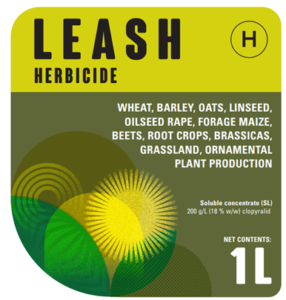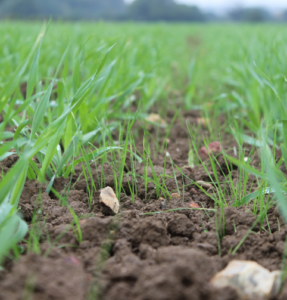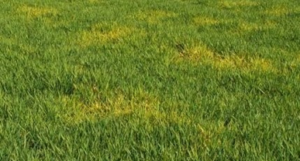Life in Life Scientific
December in Life Scientific Newsletter
After three years it was great to get the whole team together for our Christmas party in Dublin and to celebrate Nicola Mitchell’s win of the EY Entrepreneur of the Year award back in 2020. It’s the first chance we’ve had to celebrate her success together as a team so a fabulous time was had by all.

Product News
We’re delighted to announce two new products which will be added to our portfolio next spring.

LAYA contains 200g Metsulfuron and is a reverse-engineered Ally SX . LAYA is a is a sulfonyl urea herbicide for spring-applied broad-leaved wee
d control in wheat, barley, oats and triticale. It can be applied once per crop at a maximum dose of 30g/ha up to the flag leaf sheath extending stage.
Our second new addition for the spring is LEASH containing 200g clopyralid. LEASH is a reverse-engineered Dow Shield which can be used for perennial and annual broad-leaved weeds on a range of different crops (see label opposite)
More product information will be available shortly.
Niantic
In those areas where machinery travel is possible, growers are considering their herbicide options for cereals as the mild weather has been encouraging weed growth.

Niantic contains mesosulfuron-methyl and iodosulfuron-methyl-sodium, two highly active sulfonylurea herbicides for the control of non-resistant black-grass, wild oats, rye-grasses, meadow grasses, common chickweed, mayweeds, charlock and volunteer oilseed rape in winter wheat.
Application technique, particularly nozzle choice, makes a huge difference to levels of control and with spray opportunities now limited it’s crucial to get it right first time.
For more information including product label, safety data sheet and compatible tank mixes see the Life Scientific website.
BYDV In Winter Cereals
Whilst populations of cereal aphids vary across the UK, many crops are now approaching, or have reached, the critical T sum figure of 170 day degrees. This is the accumulated air temperature above 3 degrees C from the day of drilling and is important as it indicates that second generation aphids could be moving away from the plants on which they originated, spreading virus to new cereal plants.
Aphids are less active in cooler temperatures, especially below 3 degrees C, but the mild conditions which we are experiencing continue to encourage aphid activity and movement.

If crops have reached the T sum 170, and aphids can easily be found, it is worthwhile protecting your cereal crop from BYDV by applying an insecticide to control the virus-carrying aphids.
LAMBDASTAR, containing 100g/l of lambda-cyhalothrin, is approved for use on winter wheat, winter barley, winter oats and durum wheat and should be used at the full rate of 50ml/ha.
Follow the link below to view AHDB’s BYDV
management tool for cereals:
Disease Control In Oilseed Rape
Agronomists across the country are reporting that Phoma can be readily found above the disease threshold of 10-20% of plants with leaf spots (depending on the resistance rating of the variety). As the disease can lead to the formation of stem cankers with yield losses of 0.5 T/Ha, and associated issues such as premature senescence and lodging, it is worth considering a first application, or follow-up if an early application was made.
An application of an appropriate fungicide product at the end of the year can also give protection against Light Leaf Spot.

Life Scientific offers a range of effective fungicides which can be applied to the oilseed rape crop at this time. If you need cost-effective control of Phoma without any growth regulation, DIFENOSTAR (containing difenoconazole) provides a good option. AURELIA (containing prothioconazole) has activity against Phoma and Light Leaf Spot, whilst ESKER or ORASO PRO (containing both prothioconazole and tebuconazole) will also give control of both diseases, with the tebuconazole known to have some growth regulation activity in the crop.
See the labels for dose rates and timings.
Follow the link below to view AHDB’s oilseed rape disease
management guide:

